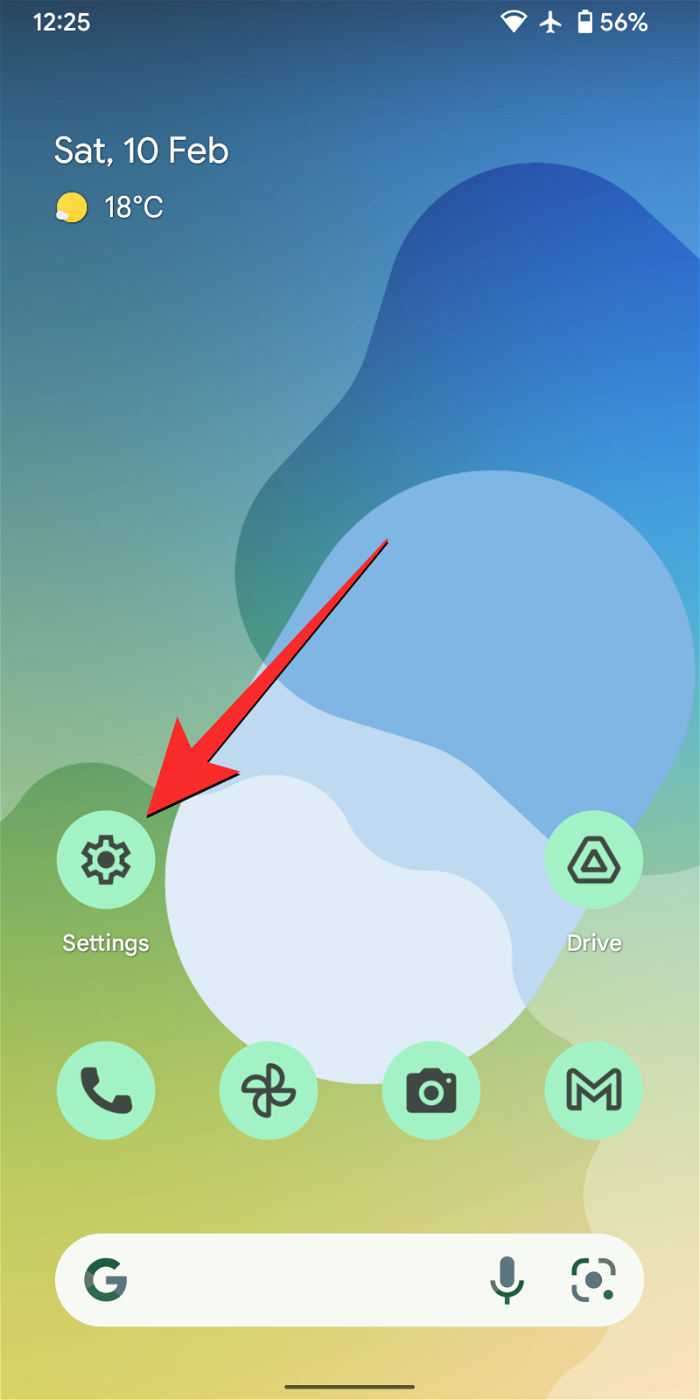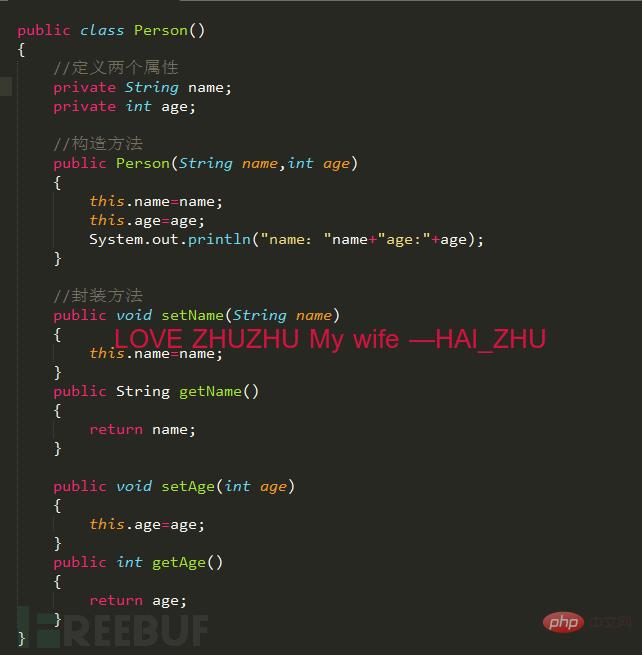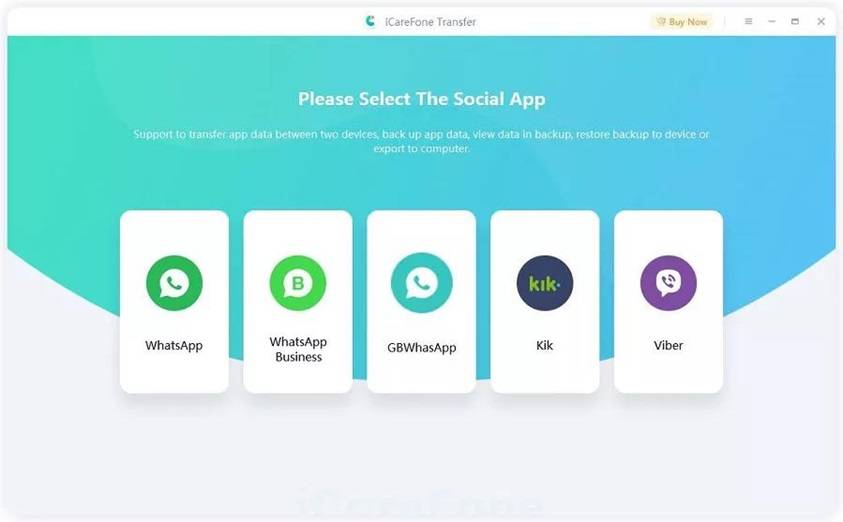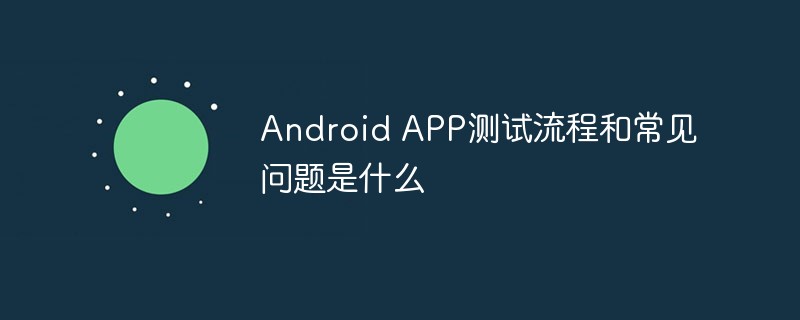Recommended: "2020 Android interview questions summary [Collection]"
I have participated in interviews with many companies since the beginning of the year, and also received several Offers from giants and other companies. Summarizing the experience is also a review and summary of the past.
1. Resume
There are a lot of guidance on programmer resumes on the Internet, so I won’t repeat them here. You can search for the summaries of other experts on the Internet and modify them based on your own situation. I have a few suggestions:
1. Try not to be fancy. Programmers are different from designers or product operators. The decision on whether our resume is successful or not lies with the technical interviewer, and what they value is Description of your project experience content and technology.
2. In the skill description, try to only write what you know and understand deeply. You can add some new technologies or popular frameworks appropriately, but this needs to be understood. If you haven’t had time to read the source code, you can take a look at what the experts have said about it. There are a lot of summaries on the Internet.
3. Try to add keywords to the project experience, such as what technology was used, what design patterns were used, optimized data comparison, extended summary, etc. Instead of simply introducing the content of the project (that is the product manager's description), for example, performance optimization is divided into UI performance optimization, memory optimization, database optimization, network optimization, power consumption optimization, etc. It can be described from the following aspects: 1. How to discover the problem, 2. How to solve the problem, 3. Comparison of the solution effects. To give a simple example - UI optimization, you can look at what problems occur in the UI (stuck and not smooth), how to find the problem (mobile developer permissions>GPU over-drawing found layer problems, TraceView CPU usage analysis), how to solve the problem ( Lowering the level, problems with custom View drawing, etc.). Compare the performance again after solving the problem.
2. Skill reserve
(1) Java
1. What is the difference between HashMap and Hashtable?
You must read the source code for this! Look at the source code! Look at the source code! If you really can’t stand it, you can go online and read other people’s analysis. A brief summary:
1. HashMap supports null Key and null Value; Hashtable does not allow it. This is because HashMap performs special processing on null, sets the hashCode value of null to 0, and stores it in the 0th bucket of the hash table.
2.HashMap is non-thread-safe. The method to implement thread-safety in HashMap is Map map = Collections.synchronziedMap(new HashMap()); Hashtable is thread-safe.
3.The default length of HashMap is 16. The expansion is 2 times the original; the default length of Hashtable is 11, and the expansion is the original 2n 1
4.HashMap inherits AbstractMap; Hashtable inherits Dictionary
extension, HashMap compares with ConcurrentHashMap, HashMap compares with SparseArray , LinkedArray vs. ArrayList, ArrayList vs. Vector
2. Java garbage collection mechanism
Need to understand JVM, memory division - method area, memory heap, virtual machine stack (thread private), local methods Stack (thread private), program counter (thread private), understand the recycling algorithm - mark and clear algorithm, reachability analysis algorithm, mark and sort algorithm, copy algorithm, generational algorithm, understand the advantages and disadvantages.
For details, you can read what other students wrote and click to open the link
3. Class loading mechanism
This can be combined with hot repair for an in-depth understanding. Click to open the link
4. Threads and thread pools, concurrency, locks and a series of issues
This can be expanded. How to implement a thread pool yourself?
5. Understanding HandlerThread and IntentService
6. The difference between weak reference and soft reference
7. What is the difference between int and Integer
Mainly evaluate value transfer and reference passing issues
8. Handwritten producer/consumer model
(2) Android
1. Android startup mode
Need to understand Activity Stack and taskAffinity
1.Standard: System default, one more Activity instance is started each time
2.SingleTop: The top of the stack is reused. If it is at the top of the stack, the life cycle will not go through onCreate( ) and onStart(), onNewIntent() will be called, which is suitable for pushing message details pages, such as news push details Activity;
3.SingleTask: reuse in the stack, if it exists in the stack, all activities on it All are popped from the stack so that they are at the top of the stack. The life cycle is the same as SingleTop. The app homepage basically uses this
4.SingleInstance: This is the SingleTask enhanced version. The system will open a separate stack for the Activity to be started. It is the only one in this stack. It is suitable for newly opened activities and apps that can be opened independently, such as the system alarm clock and WeChat’s video chat interface. I don’t know if it is the same. If you know it, let me know. Thank you!
In addition, SingleTask and SingleInstance seem to affect the callback of onActivityResult. Please search for specific issues, so I won’t elaborate.
Intent also requires further understanding of the usage and functions of Action, Data, and Category, as well as commonly used
Intent.FLAG_ACTIVITY_SINGLE_TOP Intent.FLAG_ACTIVITY_NEW_TASK Intent.FLAG_ACTIVITY_CLEAR_TOP
, etc. Please take a look at the source code for details.
2. View drawing process
ViewRoot -> performTraversal() -> performMeasure() -> performLayout() -> perfromDraw() -> View/ViewGroup measure() -> View/ViewGroup onMeasure() -> View/ViewGroup layout() -> View/ViewGroup onLayout() -> View/ViewGroup draw() -> View/ViewGroup onDraw()
Let’s take a look at the invalidate method. There are 4 parameters, and what is the difference between those without parameters? requestLayout triggers measure and layout, how to implement local re-measurement , to avoid the global remeasurement problem.
3. Event distribution mechanism
-> dispatchTouchEvent() -> onInterceptTouchEvent() -> onTouchEvent() requestDisallowInterceptTouchEvent(boolean)
Also the order of onTouchEvent(), onTouchListener, and onClickListener
4. Message distribution mechanism
This test is very common. Be sure to look at the source code, there is not much code. Let’s look at it with a few questions:
1. Why does a thread have only one Looper and only one MessageQueue?
2. How to get the Looper of the current thread? How is it achieved? (Understanding ThreadLocal)
3. Can any thread instantiate Handler? Are there any constraints?
4.Looper.loop is an infinite loop. If it cannot get the Message that needs to be processed, it will block. So why does it not cause ANR in the UI thread?
5.How does Handler.sendMessageDelayed() implement delay? Combined with Looper.loop() loop, Message=messageQueue.next() and MessageQueue.enqueueMessage() analysis.
5. AsyncTask source code analysis
Analysis of advantages and disadvantages, there are a lot of them on the Internet, so I won’t repeat them.
6. How to ensure that Service is not killed? How to ensure that the process is not killed?
These two questions were asked by 3 companies during my interview.
7. Binder mechanism, process communication
The bottom layer of process communication used by Android is basically Binder, AIDL, Messager, broadcast, and ContentProvider. I don’t understand it very deeply. At least how to use ADIL and how to use Messager can be written and read. In addition, serialization (Parcelable and Serilizable) needs to be compared. In this regard, you can read the android art development exploration book by Ren Yugang.
8. Dynamic permission adaptation issues and skin-changing implementation principles
Let’s take a look at Hongyang’s blog post in this regard
9. SharedPreference principle, can it be cross-process? How to achieve?
(3) Performance optimization issues
1. UI optimization
a. Reasonably choose RelativeLayout, LinearLayout, FrameLayout. RelativeLayout will make the sub-View call onMeasure twice, and the layout When it is relatively complex, onMeasure is relatively complex and inefficient. LinearLayout will also let the sub-View call onMeasure twice when weight>0. LinearLayout weight measurement distribution principle.
b. Use the tag
c. Reduce the layout level, you can use mobile developer options>GPU transition drawing view, general level control Within 4 layers, if it exceeds 5 layers, you need to consider whether to rearrange the layout.
d. When customizing View, rewrite the onDraw() method and do not create new objects in this method, otherwise it will easily trigger GC and lead to performance degradation
e. Reuse is required when using ListView contentView, and use Holder to reduce findViewById to load View.
f. Remove unnecessary background, getWindow().setBackgroundDrawable(null)
g. Use TextView's leftDrawabel/rightDrawable instead of ImageView TextView layout
2. Memory optimization
Mainly to avoid performance degradation caused by OOM and frequent triggering of GC
a.Bitmap.recycle(),Cursor.close,inputStream.close()
b. Mass loading When Bitmap, load Bitmap according to View size, choose inSampleSize, RGB_565 encoding method appropriately; use LruCache cache
c. Use static internal class WeakReference instead of internal classes, such as Handler, thread, AsyncTask
d .Use thread pool to manage threads to avoid new threads
e. Use singleton to hold Context and remember to release it, or use global context
f. Pay attention to releasing static collection objects
g. Attribute animation causes memory leaks
h. When using webView, it needs to be removed and destroyed in Activity.onDestory, webView.removeAllViews() and webView.destory()
Prepare: Use LeakCanary to detect memory leaks
3. Response speed optimization
If Activity cannot respond to screen touch events and keyboard input events within 5 seconds, ANR will occur, and if BroadcastReceiver cannot respond to screen touch events and keyboard input events within 10 seconds, ANR will occur before the operation is performed within 20 seconds. In order to avoid ANR, you can start a sub-thread to perform time-consuming operations, but the sub-thread cannot update the UI, so the Handler message mechanism, AsyncTask, and IntentService are required for thread communication.
Note: When ANR occurs, adb pull data/anr/tarces.txt combined with log analysis
4. Other performance optimization
a. Use static final modification for constants
b. Use SparseArray instead of HashMap
c. Use thread pool to manage threads
d. Use regular for loop for ArrayList traversal, and use foreach for LinkedList
e. Don’t Excessive use of enumerations, which occupy larger memory space than integers
f. Prioritize StringBuilder and StringBuffer for string splicing
g. Database storage uses batch insert transactions
(4) Design Pattern
1. Singleton pattern: There are several writing methods. It is required to be able to write by hand and analyze the pros and cons. Volatile is generally used in double check locks, and the principle of volatile needs to be analyzed
2. Observer mode: It is required to be able to write by hand. Some interviewers will ask you if you have used it in the project? If you really haven’t heard of it, you can talk about EventBus, which uses the observer mode
3. Adapter mode: It is required to be able to write by hand. Some companies will ask what is the difference between it and the decorator mode and the proxy mode?
4. Builder mode Factory mode: It is required to be able to write by hand
5. Strategy mode: This question is relatively rare, but some e-commerce people will ask it.
6.MVC, MVP, MVVM: Compare the similarities and differences, just choose one you are good at and focus on it
(5) Data structure
1. What are the differences in usage and principles between HashMap, LinkedHashMap, and ConcurrentHashMap? Many companies will test the HashMap principle and make some extensions through it, such as China's 1.3 billion population age Sorting problem, the age corresponds to the number of buckets, the same age and the same hash problem are similar.
2. Compared with ArrayList and LinkedList, this one is relatively simple.
3. I have also been tested on balanced binary trees, binary search trees, and red-black trees.
4.Set principle, this is somewhat similar to the HashMap test. The test is related to the hash algorithm. I was asked about the commonly used hash algorithm. HashSet uses HashMap
internally (6) Algorithm
Algorithm is mainly used to test questions. Go to LeetCode and Niuke.com to brush up.
(7) Source code understanding
Open source frameworks are more or less used in projects. Many companies like to ask about the principles and whether they have seen the source code, such as the network framework Okhttp, which is the most commonly used , Retrofit RxJava is also very popular now.
1. Network framework library Okhttp
Be sure to read the okhttp source code. Remember several key classes in it, as well as connection pools and interceptors. You need to understand them. I was asked how to add headers to the URLs of certain specific domain names. If the code is encapsulated by yourself, it can be solved in the encapsulated Request, or you can add an interceptor and do it through the interceptor.
Recommend a good article explaining Okhttp
2. Message notification EventBus
1. EventBus principle: It is recommended to look at the source code, there is not much. Internal implementation: Observer pattern Annotation Reflection
2. Can EventBus cross-process? Method to replace EventBus (RxBus)
3. Image loading library (Fresco, Glide, Picasso)
1. Which image loading library was selected in the project? Why choose it? Are other libraries bad? The difference between these libraries
2. Choose the principle of the image library in the project, such as Glide (LruCache combined with weak references), then the interviewer will ask about the principle of LruCache, and then ask about the principle of LinkedHashMap, so layer by layer People ask questions, so if you see something you don’t understand, I suggest you go in and take a look. For example, Fresco is used in the MVC design pattern, and shared memory is used below 5.0. How to use shared memory? How to achieve rounded corners in Fresco? How to configure cache in Fresco?
4. Message Push
1. Did you do the message push in the project yourself or did you use a third party? Like the aurora. Have you used any others? What are the advantages and differences between these companies, and why did you choose them?
2. What is the principle of message push? How to implement heartbeat connection?
5. TCP/IP, Http/Https
If the resume says that you are familiar with the TCP/IP protocol and Http/Https protocol, you will definitely be asked, and I will verify it. . Generally, I will answer the network layer relationship, the difference between TCP and UDP, TCP three-way handshake (be sure to explain clearly, you need to be familiar with the flag bits such as SYN, ACK and the message structure), and wave four times. Why three handshakes? DDoS attack. Why do we shake hands three times and wave four times? Http message structure, what is the process of a network request? What is the difference between HTTP and HTTPS? How does SSL/TLS perform an encrypted handshake? How to verify the certificate? What are symmetric encryption algorithms and asymmetric encryption algorithms? Choose a familiar encryption algorithm and briefly introduce it? How does DNS resolution work?
6. Hot update, hot repair, plug-in (this area is more demanding and generally senior engineers need to understand it)
Understand classLoader
7. New technology
RxJava, RxBus, RxAndroid, when interviewing the company you want to go to, you can decompile their packages and see if they are used. If they are used, you will inevitably ask questions during the interview. If not, how can you It can be ignored, but students with a strong desire to learn can take a look at it. It is a relatively popular framework.
Retrofit, students who are familiar with okhttp suggest taking a look. I heard that it is very cool to combine it with RxJava.
Kotlin
3. Finally
The internal referral method is the first choice for resumes, which is fast and efficient! Then you can take a look at the hook, the boss, Maimai, and the street. It says on your resume that if you are familiar with any technology, you must be familiar with it, otherwise it will not be embarrassing when asked! What kind of projects have you done? Even if the project size is not large, you must be familiar with the implementation principles! It's not the part you're responsible for. You can also look at how your colleagues implement it. What would you do if it were you? What you have done and what you know is a matter of breadth, depending on the content of the project. But what you have done and what state you have reached are in-depth issues related to your personal learning ability and attitude towards problem-solving. Large companies look at depth, small companies look at breadth. You know what you know when interviewing with big companies, but whether you know what they use in interviews with small companies is the job matching degree.
After selecting a few companies you want to go to, first go to some small companies to practice and learn interview skills. In summary, you can also be familiar with the interview atmosphere. You can talk to colleagues or product PKs. It’s very clear and clear. It’s really different when you get to the scene. How to describe everything you do is definitely an academic question!
Be sure to be polite during the interview! Even if you feel that the interviewer does not respect you and often interrupts your explanations, or you feel that he is not as good as you and the questions he asks lack professionalism, you must respect him because he is the one who chooses you now and waits for you to get the offer. It's you who chooses him in the end.
In addition, you must be slow to describe the problem! Don't talk a lot at once. Slowness shows that you are calm and confident, and you still have time to reflect on your ideas on how to talk better next. Nowadays, development relies too much on IDE, so there will be a disadvantage. When we explain it in the interview, it is easy not to know how to pronounce a certain method. This is a flaw... So we must know the common key class names. , method names, and keywords should be read accurately. Some interviewers will be impatient and say, "Which one are you talking about?" At this time, we will easily get confused. Correct pronunciation, calm description, and a nice voice are definitely a plus!
The most important thing is mentality! Mentality! Mentality! Say important things three times! The interview time is very short, and it is relatively unrealistic for the other party to find out your background in a short period of time. Therefore, sometimes it is also based on eyesight. This is still an era of face.
I hope everyone can find a job that is suitable and satisfactory to them! fighting!
The above is the detailed content of Share Android interview experience [Selected]. For more information, please follow other related articles on the PHP Chinese website!
 如何在 iPhone 和 Android 上关闭蓝色警报Feb 29, 2024 pm 10:10 PM
如何在 iPhone 和 Android 上关闭蓝色警报Feb 29, 2024 pm 10:10 PM根据美国司法部的解释,蓝色警报旨在提供关于可能对执法人员构成直接和紧急威胁的个人的重要信息。这种警报的目的是及时通知公众,并让他们了解与这些罪犯相关的潜在危险。通过这种主动的方式,蓝色警报有助于增强社区的安全意识,促使人们采取必要的预防措施以保护自己和周围的人。这种警报系统的建立旨在提高对潜在威胁的警觉性,并加强执法机构与公众之间的沟通,以共尽管这些紧急通知对我们社会至关重要,但有时可能会对日常生活造成干扰,尤其是在午夜或重要活动时收到通知时。为了确保安全,我们建议您保持这些通知功能开启,但如果
 在Android中实现轮询的方法是什么?Sep 21, 2023 pm 08:33 PM
在Android中实现轮询的方法是什么?Sep 21, 2023 pm 08:33 PMAndroid中的轮询是一项关键技术,它允许应用程序定期从服务器或数据源检索和更新信息。通过实施轮询,开发人员可以确保实时数据同步并向用户提供最新的内容。它涉及定期向服务器或数据源发送请求并获取最新信息。Android提供了定时器、线程、后台服务等多种机制来高效地完成轮询。这使开发人员能够设计与远程数据源保持同步的响应式动态应用程序。本文探讨了如何在Android中实现轮询。它涵盖了实现此功能所涉及的关键注意事项和步骤。轮询定期检查更新并从服务器或源检索数据的过程在Android中称为轮询。通过
 如何在Android中实现按下返回键再次退出的功能?Aug 30, 2023 am 08:05 AM
如何在Android中实现按下返回键再次退出的功能?Aug 30, 2023 am 08:05 AM为了提升用户体验并防止数据或进度丢失,Android应用程序开发者必须避免意外退出。他们可以通过加入“再次按返回退出”功能来实现这一点,该功能要求用户在特定时间内连续按两次返回按钮才能退出应用程序。这种实现显著提升了用户参与度和满意度,确保他们不会意外丢失任何重要信息Thisguideexaminesthepracticalstepstoadd"PressBackAgaintoExit"capabilityinAndroid.Itpresentsasystematicguid
 Android逆向中smali复杂类实例分析May 12, 2023 pm 04:22 PM
Android逆向中smali复杂类实例分析May 12, 2023 pm 04:22 PM1.java复杂类如果有什么地方不懂,请看:JAVA总纲或者构造方法这里贴代码,很简单没有难度。2.smali代码我们要把java代码转为smali代码,可以参考java转smali我们还是分模块来看。2.1第一个模块——信息模块这个模块就是基本信息,说明了类名等,知道就好对分析帮助不大。2.2第二个模块——构造方法我们来一句一句解析,如果有之前解析重复的地方就不再重复了。但是会提供链接。.methodpublicconstructor(Ljava/lang/String;I)V这一句话分为.m
 如何在2023年将 WhatsApp 从安卓迁移到 iPhone 15?Sep 22, 2023 pm 02:37 PM
如何在2023年将 WhatsApp 从安卓迁移到 iPhone 15?Sep 22, 2023 pm 02:37 PM如何将WhatsApp聊天从Android转移到iPhone?你已经拿到了新的iPhone15,并且你正在从Android跳跃?如果是这种情况,您可能还对将WhatsApp从Android转移到iPhone感到好奇。但是,老实说,这有点棘手,因为Android和iPhone的操作系统不兼容。但不要失去希望。这不是什么不可能完成的任务。让我们在本文中讨论几种将WhatsApp从Android转移到iPhone15的方法。因此,坚持到最后以彻底学习解决方案。如何在不删除数据的情况下将WhatsApp
 同样基于linux为什么安卓效率低Mar 15, 2023 pm 07:16 PM
同样基于linux为什么安卓效率低Mar 15, 2023 pm 07:16 PM原因:1、安卓系统上设置了一个JAVA虚拟机来支持Java应用程序的运行,而这种虚拟机对硬件的消耗是非常大的;2、手机生产厂商对安卓系统的定制与开发,增加了安卓系统的负担,拖慢其运行速度影响其流畅性;3、应用软件太臃肿,同质化严重,在一定程度上拖慢安卓手机的运行速度。
 Android中动态导出dex文件的方法是什么May 30, 2023 pm 04:52 PM
Android中动态导出dex文件的方法是什么May 30, 2023 pm 04:52 PM1.启动ida端口监听1.1启动Android_server服务1.2端口转发1.3软件进入调试模式2.ida下断2.1attach附加进程2.2断三项2.3选择进程2.4打开Modules搜索artPS:小知识Android4.4版本之前系统函数在libdvm.soAndroid5.0之后系统函数在libart.so2.5打开Openmemory()函数在libart.so中搜索Openmemory函数并且跟进去。PS:小知识一般来说,系统dex都会在这个函数中进行加载,但是会出现一个问题,后
 Android APP测试流程和常见问题是什么May 13, 2023 pm 09:58 PM
Android APP测试流程和常见问题是什么May 13, 2023 pm 09:58 PM1.自动化测试自动化测试主要包括几个部分,UI功能的自动化测试、接口的自动化测试、其他专项的自动化测试。1.1UI功能自动化测试UI功能的自动化测试,也就是大家常说的自动化测试,主要是基于UI界面进行的自动化测试,通过脚本实现UI功能的点击,替代人工进行自动化测试。这个测试的优势在于对高度重复的界面特性功能测试的测试人力进行有效的释放,利用脚本的执行,实现功能的快速高效回归。但这种测试的不足之处也是显而易见的,主要包括维护成本高,易发生误判,兼容性不足等。因为是基于界面操作,界面的稳定程度便成了


Hot AI Tools

Undresser.AI Undress
AI-powered app for creating realistic nude photos

AI Clothes Remover
Online AI tool for removing clothes from photos.

Undress AI Tool
Undress images for free

Clothoff.io
AI clothes remover

AI Hentai Generator
Generate AI Hentai for free.

Hot Article

Hot Tools

SublimeText3 Chinese version
Chinese version, very easy to use

WebStorm Mac version
Useful JavaScript development tools

Zend Studio 13.0.1
Powerful PHP integrated development environment

SublimeText3 Linux new version
SublimeText3 Linux latest version

Safe Exam Browser
Safe Exam Browser is a secure browser environment for taking online exams securely. This software turns any computer into a secure workstation. It controls access to any utility and prevents students from using unauthorized resources.







